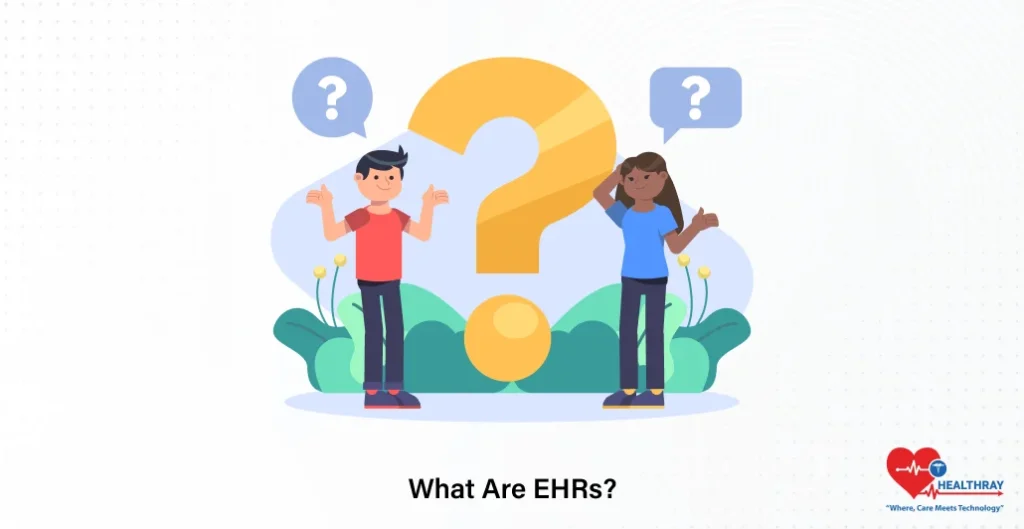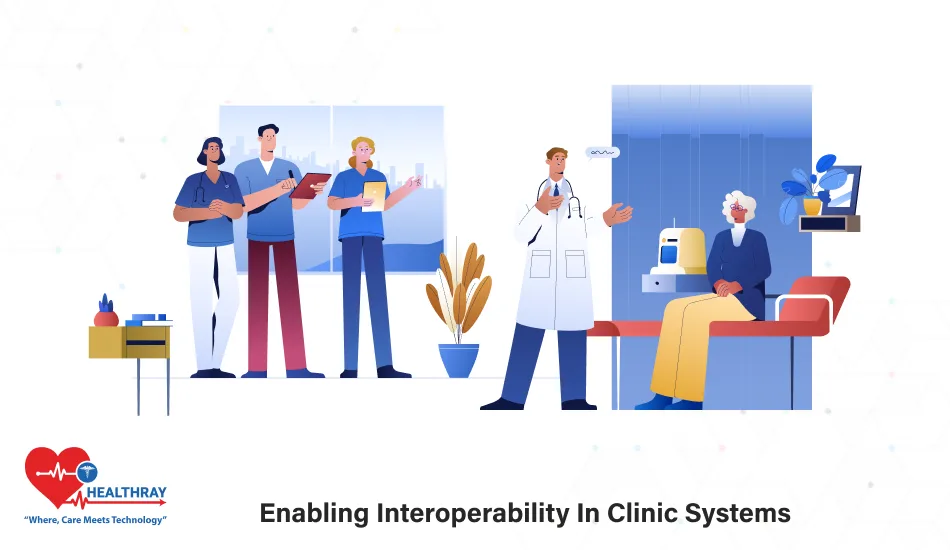Summary
This post explains why a secure EHR platform for PHI is important for protecting patient data. It includes important security measures such as access control, encryption, auditing, backups, and secure patient tools.
It also indicates how strong EHR software enables better care, better workflow, and more patient trust. You learn how to build a safe platform and keep it safe as technology grows. If you want to protect your data, take better care, and stay ahead of threats, this blog is one you don’t want to miss.
Introduction
You can probably see how quickly healthcare is going digital today. And with every new tool, you also face the concern of how safe patient information truly is. That is why a secure EHR platform for PHI matters now more than ever.
Modern EHR software stores vast amounts of sensitive data and requires strong protection at every step. You want systems that keep your patients’ information secure without impeding your day-to-day work.
You need confidence, too, that your technology can handle new threats and will not place stress on your team. It’s all about tools that are easy to manage, easy to update, and robust enough to stop modern cyberattacks. When everyone in your organization has trust in the platform, you provide care with more focus and speed. In this blog post, you’ll learn how to build a secure EHR platform for PHI.
What are EHRs?

EHRs (Electronic Health Records) are electronic records of patients’ medical history. They hold information such as visits, tests, allergies, and medicines. EHR software enables doctors to view this information quickly and in one place. It eliminates reams of paper files and errors. There’s also fast functionality for updating information so that everyone on a team is working on the most current information.
EHRs also help with information exchange when a patient transfers from one clinic or hospital to another. They help doctors make better decisions because they see the patient’s health more clearly. These files are always secured behind strict security measures. They enhance care by providing teams with simple, accurate information.
What is PHI?
PHI is Protected Health Information. It includes any personal health details that can identify a patient. This can be a name, address, age, phone number, or medical history. It includes test results, medicines, and notes from doctors as well. But all of this data is health data, and remains sensitive in its direct linkage to an individual’s health.
PHI also includes insurance information, billing information, and information disclosed in the course of care. Teams in healthcare must protect the PHI with strong rules and secure tools. If someone steals this information or misuses it, it can harm the patient. This is why every clinic and hospital uses strong safeguards to protect PHI at all times.
Why a Secure EHR Platform for PHI Is Important?
The reason for a secure EHR platform for PHI is that healthcare is completely dependent on digital information. In fact, all clinics, hospitals, and providers record patient data, including medical records, treatment history, lab reports, allergies, and billing information, in EHR software.
Consequently, if this data remains unsecured, it poses a serious threat to patients and the medical institution. Therefore, this sensitive data is secured in a system that safeguards it from unauthorized access, theft, and misuse. Moreover, it builds trust, because patients are safer when they know their information is protected at all steps.
Furthermore, a secure EHR platform for PHI also leads to better care. Through features such as clinical decision support in EHR, physicians are provided with pertinent information that ultimately enables safer, faster treatment options. Additionally, a safe platform also improves patient portal integration in EHR, allowing patients to check reports, book visits, view prescriptions, and communicate with their doctors without any privacy concerns.
Security also helps healthcare organisations keep up with modern EHR trends. Specifically, these trends include cloud systems, AI insights, mobile access, and remote monitoring. While each brings opportunities, they also present challenges.
Consequently, these new functionalities can only be implemented in a secure platform where the PHI is not vulnerable. In fact, a secure system ensures that every new update, tool, or connection functions seamlessly and safely.
Key Elements of a Secure EHR Platform for PHI
Here are some of the key elements of a secure EHR platform for PHI:
Strong Access Control
Strong access control is an essential starting point for a secure EHR platform for PHI. That means, consequently, the right people see the right information at the right time.
In any EHR software system, for instance, doctors, nurses, billing staff, and admin teams all require different access. Moreover, the absence of parameters means that individual patient data can easily fall into nefarious hands.
Therefore, good access control uses role-based permissions, activity logging, and real-time monitoring. This, in turn, keeps care teams focused and protects sensitive data.
Data Encryption Everywhere
In addition, encryption secures patient data in transmission over a network or while residing in servers. Thus, a secure EHR platform for PHI will encrypt everything, including records, lab files, images, prescriptions, and even messages.
Specifically, encryption converts readable data into unreadable code, so that even if attackers got it, they can’t use it. Therefore, encryption at all times means you protect PHI in every stage of care.
Safe Data Storage and Reliable Backups
A secure EHR platform for PHI requires protected servers, clean storage depositories, and backups. If something goes wrong, like a cyberattack, fire, network crash, or human error, the system can quickly download data and back everything up.
This, in turn, does not protect only medical information but also offers a safe clinical decision support in EHR. Moreover, keeping them secure also allows clinics to comply with regulations and to preserve credibility with patients who rely on their records.
Simple and Strong User Authentication
It has to be easy for harried clinicians; however, it must be hard for hackers to hack. A secure EHR platform for PHI usually involves multi-factor authentication, biometrics, and secure login tokens.
These tools, consequently, shield EHR software and do not impede care teams. Additionally, good authentication also facilitates patient portal integration in EHR smoothly, as patients can securely sign on from home, mobile devices, or clinics.
Continuous System Monitoring
The third critical component is monitoring. An efficient one is always on the lookout for odd patterns of behavior, logins, and movements of data.
This aids organisations in adapting to modern EHR trends, where threats and events evolve rapidly, while protecting PHI. It keeps everything in the system safe, up to date, and functional.
How to Build a Secure EHR Platform for PHI Step by Step?

Step 1: Set Clear Goals and Scope
Begin with what your secure EHR platform for PHI needs to protect. Include all patient data types your EHR software will capture, such as test results, treatment history, messages, billing, etc.
Determine how you want features such as patient portal integration in EHR to operate for your patients. You also need to understand compliance rules and industry standards so that your platform can be safe and legal. When goals and scope are clear, the whole team knows what success looks like and what you are building towards.
Step 2: Choose a Secure Architecture
Isolate key systems, use layered defenses and do not keep everything in one location. Pick cloud, hybrid, or on-premise, as long as there are strong controls in all three.
Your EHR software design should include a threat in scope in case something goes wrong. Also consider future growth, and keep an eye on modern EHR trends, including cloud-native modules, AI capabilities, and mobile accessibility. Having a secure architecture makes every step easier in the future.
Step 3: Harden Data Access and Identity
Impose rigid access controls on the secure EHR platform to safeguard PHI. Role-based permissions ensure teams only view the data they truly need to be viewing. Implement two-factor authentication, checks on devices and short session timeouts to catch unauthorised access.
Also, restrict admin access and strengthen protection for these accounts. Keeping identity and access clean makes your EHR software safer for all functions, including those sensitive functions such as clinical decision support in EHR.
Step 4: Encrypt Data at Rest and in Transit
A secure EHR platform for PHI employs strong encryption for both record storage and network communications. Your EHR software data files, messages, images, and lab reports should be encrypted.
Make sure that the patient portal integration in EHR also employs end-to-end encryption for securing patient logins and messages. Always remember that encryption provides a solid level of protection from an intruder to your system.
Step towards digital era with our healthcare solution
Revamp your hospital facilities and embrace change for better healthcare management. Ease in managing and organizing large medical datasets leads to effective analysis. Seize the opportunity now!
Step 5: Secure APIs and Integrations
APIs link your EHR software to labs, pharmacies, billing systems and patient portals, which all need to be protected. Secure EHR platforms storing PHI should implement token authentication, strict rate limits, and careful input validation of all API calls.
So, monitor your API traffic for anomalous behavior that could indicate emerging risks in EHR. Safe APIs prevent attackers from gaining access through weak links.
Step 6: Safe Data Storage and Reliable Backups
Store PHI in secure storage and databases. Backing up PHI on a secure EHR system should involve regular backups, off-site storage, and regular testing of restore capabilities.
So, encrypt all backups and designate them as sensitive assets in your EHR software. It also helps improve care because your medical records are complete and accurate.
Step 7: Build Secure Patient Tools
A well-integrated EHR patient portal will provide information to patients securely while remaining HIPAA compliant. Employ strong authentication, secure recovery methods, and clear privacy policies.
Show each patient information that is correct only to that patient, and be sure messages are encrypted from end-to-end. Make it easy to report suspicious behavior. When your portal is secure, patients trust your EHR software and engage in their care.
Step 8: Monitor, Log, and Detect Threats
Continuous monitoring protects your confidential EHR systems from unseen threats and attacks on PHI. Collect logs from apps, servers, databases, and devices. Set alerts for anomalous patterns of access, movements of data, and logins.
Because threat vectors change, your monitoring strategy should also evolve to keep pace with modern trends in EHR. Effective detection prevents problems from impacting patients or processes.
Step 9: Test with Drills and Audits
Continuous testing exposes vulnerabilities before attackers can realise them. Conduct penetration tests, internally simulate employee or contractor abuse, and rigorously check your EHR software for settings that may be out of date.
Also, conduct compliance audits for privacy law. Troubleshoot any issues and take notes on how your group solves them. These drills will enhance your strong and secure EHR platform for PHI.
Step 10: Train Staff and Plan for Continuous Improvement
Your system remains secure only if your people practice good habits. Train staff on secure use of EHR software, reporting problems quickly, and clean data practices. Use short training sessions, with examples from your own system. Encourage questions and take the fear out of reporting mistakes.
Also, keep an eye on modern EHR trends and add new defenses when needed. Evaluate risks each time you introduce features or link new systems. When re-engineering workflow, consider both staff members and patients. Your secure EHR platform for PHI will remain strong for years to come due to a commitment to improvement.
Conclusion
To wrap up, a secure EHR platform for PHI safeguards patient information, enables safe care, and fosters trust over time. Good security also enhances the reliability of your EHR software for day-to-day clinical work.
When every layer stays protected, your teams can work confidently, your patients are at ease, and your system enables better outcomes across every workflow.





